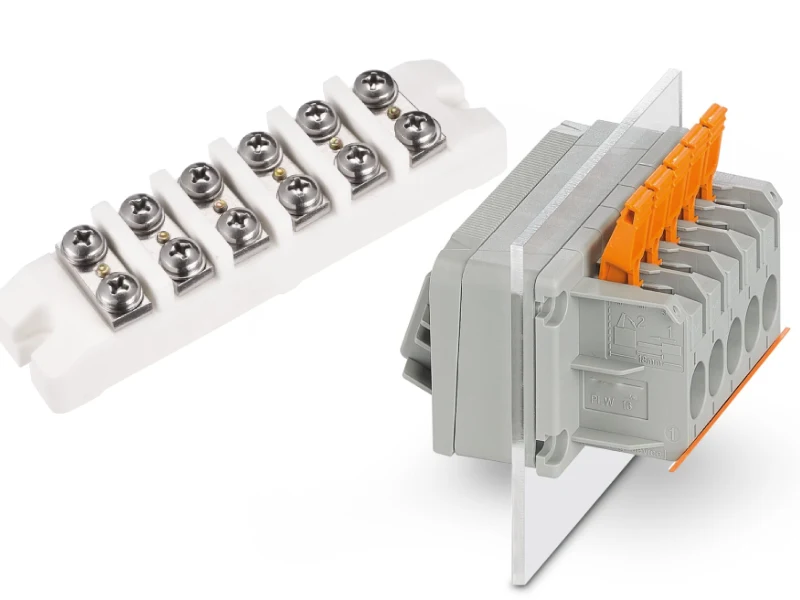Ever pressed a doorbell, activated a computer, or used a “push-to-talk” feature? You’ve interacted with a momentary push button switch! These unassuming yet vital components are everywhere, forming the backbone of countless electronic devices and systems that require temporary, on-demand activation.
In this guide, we’ll demystify the momentary push button switch, exploring its fundamental operation, various types, and how to effectively incorporate it into your projects. Understanding these versatile components is key to building responsive and intuitive electronic solutions.
What is a Momentary Push Button Switch?
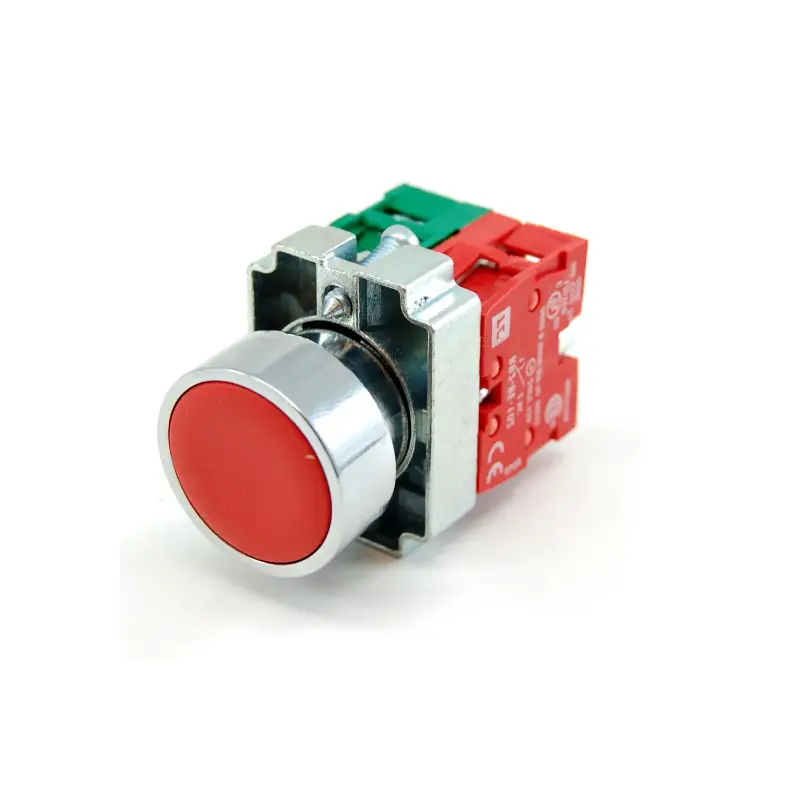
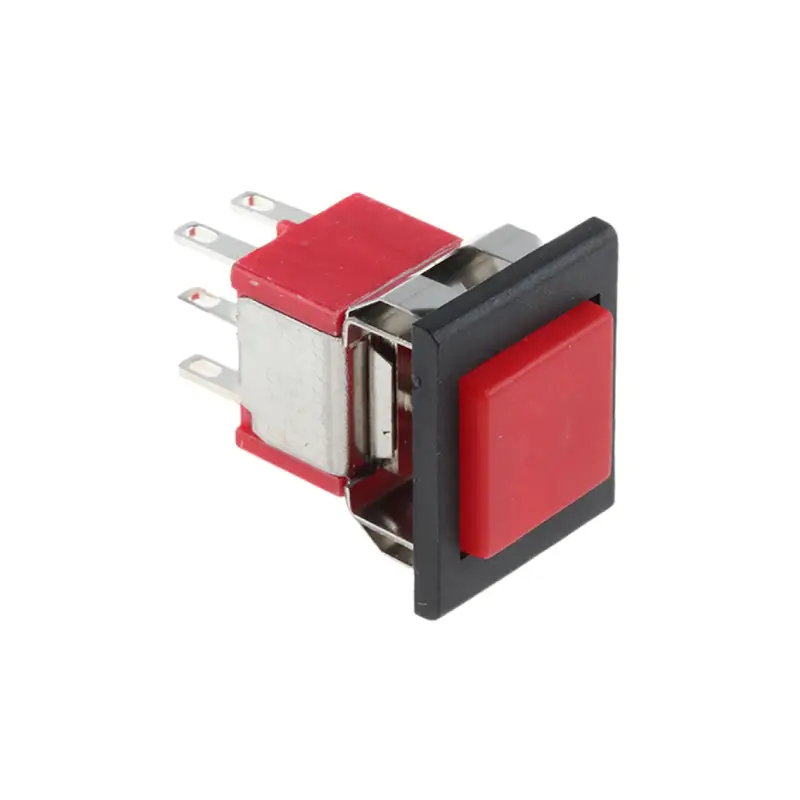
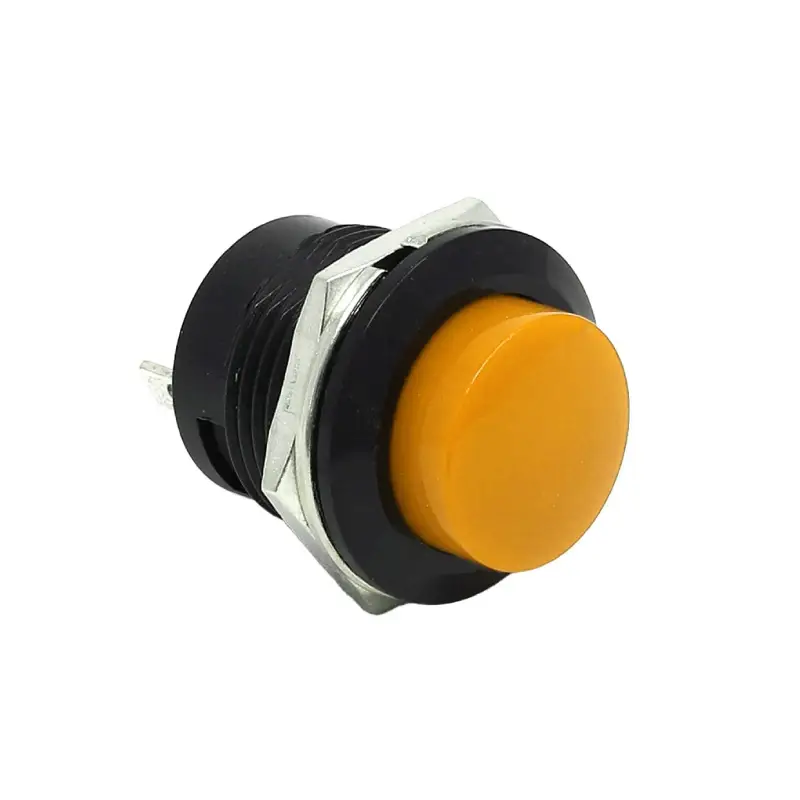
A momentary push button switch is an electrical switch designed for temporary activation. Unlike latching switches, it only maintains its contact state (either open or closed) for as long as it is physically pressed.
Upon release, an internal spring mechanism instantly returns the switch to its default position, making it ideal for applications requiring brief, on-demand actions like doorbells, computer resets, or “push-to-talk” functions.
How Does a Momentary Push Button Switch Work?
A momentary push button switch operates on a straightforward principle: it establishes or breaks an electrical circuit only while the button is physically depressed. Its functional mechanism typically comprises:
- Actuator (Button): This is the user-interface part that is pressed.
- Movable Contact: A conductive component connected to the actuator.
- Stationary Contacts: Fixed conductive points that the movable contact interacts with.
- Spring: A crucial element that returns the actuator and movable contact to their original, resting position immediately upon release.
When the button is pressed, the actuator moves the movable contact to either connect with or separate from the stationary contacts, thereby altering the circuit’s state. As soon as pressure is removed, the spring ensures an instantaneous return to the default open or closed position.
Momentary Push Button Switch Types
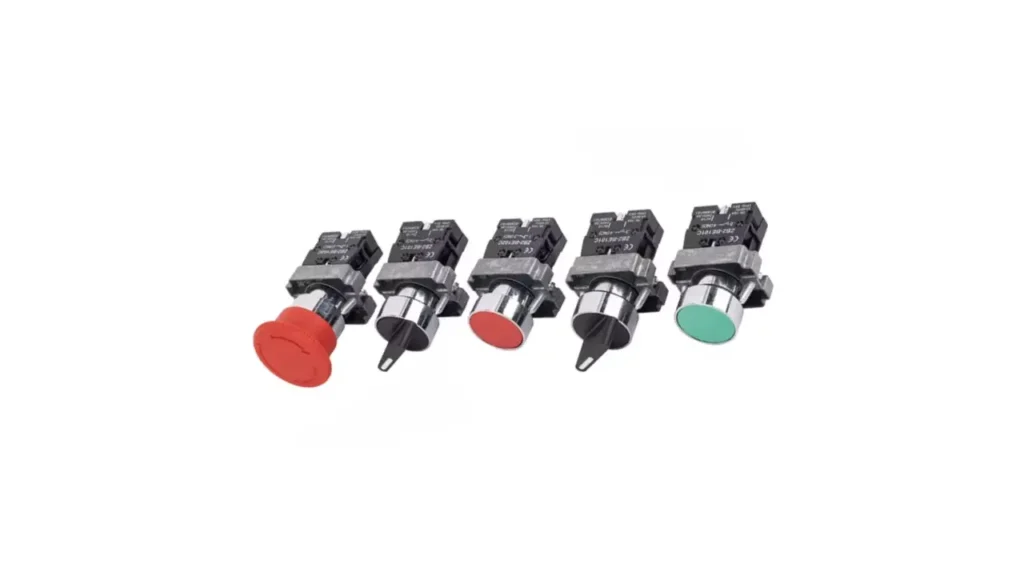
Momentary push button switches come in various types, primarily categorized by their contact configuration and specialized features. Understanding these distinctions helps in selecting the right switch for a specific application.
Normally Open (NO)
This is the most common configuration. When at rest, the switch’s contacts are open, meaning the circuit is off. Pressing the button closes the contacts, completing the circuit and activating the connected device. Upon release, the contacts return to their open state, breaking the circuit.
Normally Closed (NC)
Conversely, in a Normally Closed setup, the switch’s contacts are closed when at rest, meaning the circuit is continuously on. Pressing the button opens the contacts, which temporarily breaks the circuit and turns off the connected device. Releasing the button allows the contacts to return to their closed position.
Double Pole, Double Throw (DPDT)
A more complex momentary switch, a DPDT type has six terminals and can simultaneously control two separate circuits. When actuated, it switches the connection for both circuits from one set of contacts to another. This allows for more intricate control schemes, such as momentarily reversing the polarity to a motor.
Illuminated
Illuminated momentary switches integrate a built-in LED that lights up when the switch is pressed, or sometimes to indicate power or status. This visual feedback is highly beneficial in low-light conditions or when it’s crucial to confirm the switch’s activation state, enhancing user experience and safety.
Tactile
While many momentary switches offer some tactile feedback, “tactile switches” specifically refer to compact, low-force switches designed to provide a distinct “click” sensation or audible sound upon actuation. They are widely used in keyboards, control panels, and consumer electronics where a clear physical or auditory confirmation of a successful press is desired.
Anti-Vandal/Ruggedized
These switches are engineered for durability in public or harsh environments. Typically constructed from robust materials like stainless steel and featuring higher IP (Ingress Protection) ratings, they are designed to resist tampering, dust, and water. This makes them ideal for outdoor applications or machinery subjected to abuse.
Momentary Switch vs Push Button
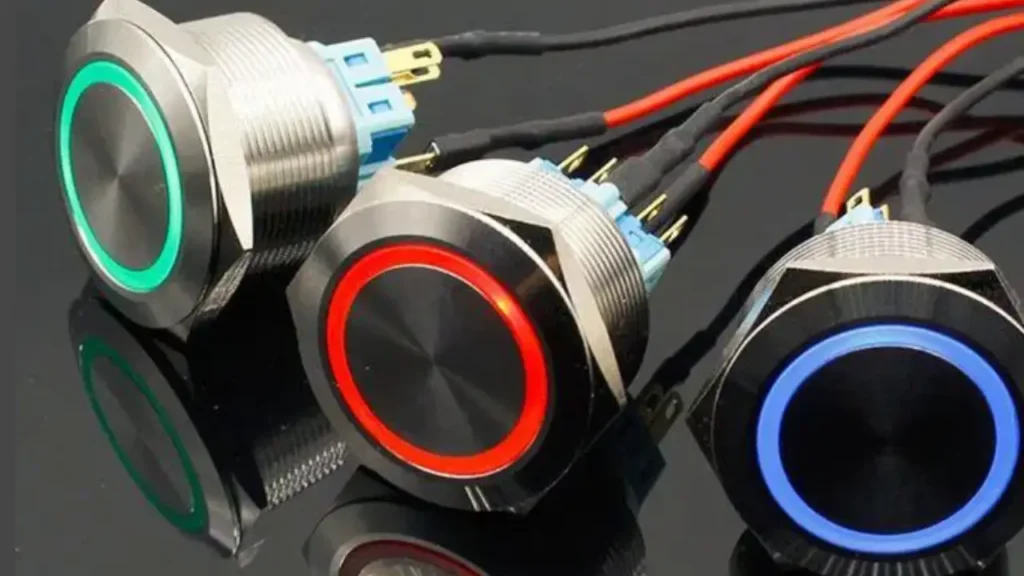
Customizing a momentary push button switch allows you to tailor its functionality and appearance to perfectly suit your specific application. This ensures optimal user experience, environmental resilience, and seamless integration into your product or system.
Housing Material and Finish
The choice of housing material dictates the switch’s durability and aesthetic. Options typically include robust metals like stainless steel, aluminum, or brass, offering excellent resistance to corrosion, impact, and wear. Finishes such as brushed, polished, or anodized not only enhance visual appeal but can also provide additional protection against environmental factors, ensuring longevity.
Illumination Type and Color
Illumination adds crucial visual feedback, indicating switch status or simply enhancing visibility. Customization includes selecting the illumination type (e.g., ring, dot, power symbol) and LED color (e.g., red, green, blue, white). This feature is particularly useful in low-light environments or for signaling specific operational states to the user, improving safety and functionality.
Actuator Style and Size
The actuator is the part the user interacts with, so its style and size are critical for ergonomics and design. Options range from flat, flush-mounted buttons for a sleek look to raised or domed styles for easier tactile feedback. Customizing the diameter and shape ensures comfortable operation and a cohesive appearance with the overall panel or device.
Terminal Type and Wiring
The method of connecting the switch impacts ease of installation and long-term reliability. Common terminal types include solder lugs for permanent, secure connections, screw terminals for easier field wiring, or pin terminals for direct PCB mounting. Selecting the appropriate terminal type streamlines assembly and ensures reliable electrical continuity for the switch’s intended purpose.
Electrical Ratings
Matching the switch’s electrical ratings to your circuit’s requirements is paramount for safety and performance. This includes specifying the maximum voltage and current the switch can safely handle (e.g., 12V, 240V, 5A, 10A). Incorrect ratings can lead to premature failure, overheating, or even fire hazards, making this a critical customization aspect.
Momentary Push Button Switch Customization
| Aspect | Description | Key Considerations |
| Housing Material & Finish | Material (e.g., stainless steel, plastic), surface treatment (e.g., brushed, anodized). | Environmental conditions, aesthetic requirements, durability, cost. |
| Illumination Type & Color | LED type (e.g., ring, dot), light color (e.g., red, blue, green). | Visibility needs, status indication, aesthetic appeal, power consumption. |
| Actuator Style & Size | Button shape (e.g., flat, domed), diameter, tactile feedback. | Ergonomics, panel integration, user interface design, accidental activation prevention. |
| Terminal Type & Wiring | Connection method (e.g., solder, screw, PCB pins). | Ease of installation, reliability of connection, maintenance, manufacturing process. |
| Electrical Ratings | Maximum voltage (V) and current (A) capacity. | Circuit load, safety standards, longevity under specified electrical conditions. |
How to Wire a Momentary Push Button Switch?
Wiring a momentary push button switch correctly is crucial for its proper function. This guide will walk you through the essential steps to connect your switch, ensuring safe and effective operation in your circuit.
Step 1: Identify Terminals
First, identify the terminals on your momentary push button switch. These are the connection points where wires will be attached. On most simple momentary switches, you’ll find two terminals; however, more complex switches like DPDT types will have more.
Some switches might have labels (e.g., NO for Normally Open, NC for Normally Closed), or you may need to use a multimeter to test continuity and confirm which terminals connect when the button is pressed. Correct identification is crucial for proper circuit behavior.
Step 2: Prepare Wires
Next, prepare your wires by carefully stripping a small section of insulation from each end that will connect to the switch. The stripped length should be sufficient to make a secure connection without exposing excess bare wire that could cause short circuits.
Choosing the correct wire gauge is also important; it should be appropriate for the current that will flow through the circuit to prevent overheating and ensure safe, reliable operation of your system.
Step 3: Connect Power Source
Now, connect one of your prepared wires from the positive terminal of your power source (e.g., battery or power supply) to the input terminal of your momentary push button switch. This connection brings power to the switch.
Ensure this connection is robust and secure, whether you are soldering, using screw terminals, or crimping. A loose connection can lead to intermittent operation, poor performance, or even a fire hazard over time.
Step 4: Connect to Load
Finally, connect a wire from the remaining output terminal of the momentary push button switch to the positive input of your desired load (e.g., an LED, motor, or relay coil). This completes the path from the switch to the component it controls.
To complete the circuit, you will then connect the other side of your load (its negative terminal) directly back to the negative terminal of your power source. When the button is pressed, the circuit closes, and your load activates.
Momentary Push Button Switch Uses
Momentary push button switches are ubiquitous in modern technology due to their versatile ability to provide temporary circuit activation. Their applications span across various industries and everyday devices, facilitating precise, on-demand control.
- Consumer Electronics: Doorbells, computer keyboards (each key is a momentary switch), remote controls, and gaming controllers all rely on momentary buttons for instant input.
- Industrial Equipment: Used extensively in control panels, machinery start/stop functions, emergency stop buttons, and process activation where a brief signal is needed.
- Automotive: Found in car horns, power window controls (press to move, release to stop), ignition systems, and dashboard controls for various functions.
- Security Systems: Integral to door access controls, intercom systems, and alarm activation where a temporary signal triggers an action.
- Home Automation: Utilized in smart lighting controls (for dimming or scene changes), motorized blinds, and other smart device interfaces that require quick, precise adjustments.
Why Choose Linkwell Momentary Push Button Switch
Choosing the right supplier for momentary push button switches is critical for your project’s success, influencing reliability, performance, and cost. Linkwell Electrics stands out as a preferred manufacturer from China, offering a compelling blend of quality and comprehensive service.
Manufacturing Expertise
Linkwell Electrics brings extensive experience in manufacturing electrical components, including momentary push button switches. Our production processes adhere to strict quality control, from raw material selection to final product testing, ensuring each switch meets high standards for performance and durability. We utilize advanced manufacturing techniques to produce reliable and consistent products.
Product Quality and Durability
Our momentary push button switches are built to last. We prioritize the use of high-quality materials such as robust metals for housing and reliable internal components, resulting in switches with excellent mechanical and electrical life. Many of our switches feature high IP ratings (like IP67 and IP68), providing superior resistance to water and dust, ideal for demanding environments.
Customization Capabilities
Linkwell Electrics offers extensive customization options for momentary push button switches. You can tailor various aspects, including housing material and finish, illumination type and color, actuator style and size, and terminal type. This flexibility ensures that the switches seamlessly integrate into your specific application’s design and functional requirements.
Certifications and Compliance
Our commitment to quality is underscored by various international certifications, including CE and RoHS. These certifications affirm that Linkwell Electrics’ products meet stringent safety, environmental, and quality standards, providing assurance of compliance and reliability for global markets. We are dedicated to delivering products that you can trust.
Competitive Pricing and Wholesale Solutions
As a manufacturer from China, Linkwell Electrics offers highly competitive pricing for wholesale momentary push button switches. We provide cost-effective solutions without compromising on quality, making us an ideal partner for businesses looking to source large quantities of high-performance switches while managing project budgets effectively
Conclusion
Momentary push button switches are essential components for countless electronic applications, offering simple yet precise temporary control. From signaling functions to activating complex machinery, their diverse types and customizable features ensure a perfect fit for any project requiring brief, deliberate action.
By understanding their basic operation and the nuances of NO, NC, and specialized designs, you can confidently integrate these switches into your designs. Their versatility makes them an indispensable part of modern electrical engineering.
For reliable, momentary push button switches, explore the extensive range offered by Linkwell Electrics. As a trusted manufacturer from China, we provide wholesale solutions designed to meet your project’s specific demands, ensuring durability and performance.



